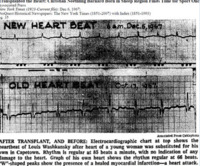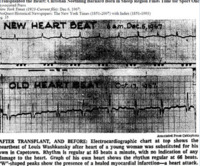Items
Site
The Medicine Chest
keywords is exactly
Peter Pan
-

Foxgloves
Called variously foxgloves, witch’s gloves, dead men’s bells, fairy’s gloves, bloody fingers, gloves of our lady, fairy caps, virgin’s gloves or fairy thimbles, Digitalis purpurea is popular with children, who pluck the tempting bell-shaped blooms and wear them like thimbles, admonished not to lick their fingers afterwards for fear they will go blind (Young 2002: 57). While the flower can be lethal if ingested, the drug digitalis derived from foxglove is most commonly used as a heart stimulant. Digitalis has been prescribed since the 17th century, perhaps earlier, as a diuretic and to slow the pulse and is still the drug of choice for atrial fibrillation. In the 1770s, William Withering got an old family recipe, a herbal infusion for treating swollen legs, from a Shropshire woman and identified digitalis as the active one of the twenty ingredients. Many more antiarrhythmic drugs now exist (Young 2002: 57). Made up of surgical gloves, Band-Aids, syringes and IV-tubing (with an infusion of foxglove leaves in its stem) the work mimicked the language of the herbarium specimen, drawing a viewer in to examine the content they were expecting, only to surprise them with its incongruous materials. -

Second star to the right and straight on 'til morning
Cyanotype on paper. Ink on perspex. The work shows the exact positioning of the stars from J.M. Barrie’s window at 3 Adelphi Terrace, London (51°30'N 0°7'21"W), on Saturday, 19 June 1937 – the night of his death. Based on the direction of his window, I was able to locate the ‘second star to the right’ at the 45 degree angle he would have stood and viewed the night sky. Hopefully, he reached his destination, after departing the flat and traveling ‘straight on till morning’. -

Woman, woman, let go of me
In the chapter he titled, 'When Wendy Grew Up', J.M. Barrie recalls how Wendy tried, for Peter’s sake, not to have growing pains – and how she even felt untrue to him when she got the prize for general knowledge. But the years came and went without bringing the careless boy and Wendy eventually grew up and got married. If you feel sorry for her, don’t. Barrie tells us that Wendy was the kind of girl that liked growing up and that in the end, “ she grew up of her own free will a day quicker than other girls” (1989:182). All grown up with a daughter of her own, Peter visits her again one night while she’s sitting in front of the fire, darning. She hears the crow call and the window blows open as of old, Peter dropping to the floor – looking exactly the same as ever. “He was a little boy, and she was grown up. She huddled by the fire not daring to move, helpless and guilty, a big woman. ‘Hallo, Wendy,’ he said, not noticing any difference, for he was thinking chiefly of himself; and in the dim light her dress might have been the nightgown in which he had seen her first. ‘Hallo, Peter,’ she replied faintly, squeezing herself as small as possible. Something inside her was crying, ‘Woman, woman, let go of me’” (1989: 185 - 186). -

The hidden life within
-

Forest (process)
A collection of Echinacea angustifolia tea rings read by botanist and dendrochronologist, Dr Edmund February. A molecule found in the Echinacea angustifolia plant prevents a caterpillar on eating it, from ever turning into a butterfly. Example of a specimen reading: “It would appear that the tree stood on a slope since there is more compression on the left hand side, which indicates that side was under less tension. It could also be a branch of which the left hand side would be its underside. The rings are uniformly wide which suggests plenty of soil and moisture availability. In comparison with the other two trees, the outer rings suggest less water or more competition.” -

Forest
A collection of Echinacea angustifolia tea rings read by botanist and dendrochronologist, Dr Edmund February. A molecule found in the Echinacea angustifolia plant prevents a caterpillar on eating it, from ever turning into a butterfly. Example of a specimen reading: “It would appear that the tree stood on a slope since there is more compression on the left hand side, which indicates that side was under less tension. It could also be a branch of which the left hand side would be its underside. The rings are uniformly wide which suggests plenty of soil and moisture availability. In comparison with the other two trees, the outer rings suggest less water or more competition.” -

Electrocardiograph of first heart transplant
“The ventricular peaks would shoot up as in wild flight, and their intermediate planes would begin to jumble against one another like the sudden crashing of cars on a freight-train. The heart’s beautiful symmetry would then be reduced to an erratic green line of wild jerks until it entered the final isoelectric phase resembling a sawtooth – jagged lines of the heart seeking to rise like a dying bird, fluttering upward, only to fall once again onto its flat plane of death” (Barnard in Young 2002: 79-80). -

Denise Darvall
"During the first heart transplant a shift occurred in the heart of Denise Darvall, the young brain-dead car accident victim whose family had allowed her heart to be given up. In his account of the operation, Barnard writes how her heart’s life fluid returned from the lungs – how many million times had it happened? – but different this time, void of oxygen. How her heart would react, at first, as if meeting only a small inconvenience. Unaware of what was happening, it would simply pump more excitedly – expecting some relief. Yet this would never come, and it would fall back in the first wave of confusion and fatigue. Barnard equates Darvall's heart with a bird trying to take flight" (Liebenberg 2011: 107-108).


